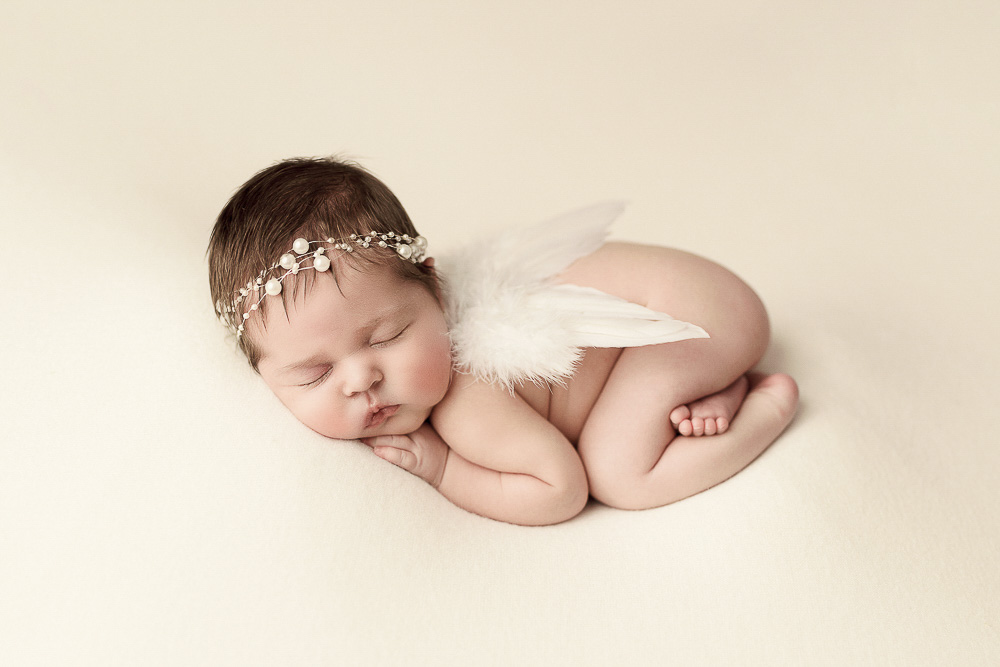How to Safely Pose a Newborn: What I Have Learned from Years of Newborn Photography
Apr 07, 2025
Newborn photography is a delicate art that combines aesthetic sensitivity with an enormous responsibility: the baby’s safety. Properly posing a newborn is not just about creating beautiful images—it’s about protecting a very fragile little human. This article is a professional guide for beginner photographers who want to create stunning photos without compromising the comfort or safety of their tiny models.
Understand the Anatomy and Needs of a Newborn
The first step in safely posing a newborn is understanding how their body works:
Muscles and joints are still developing, so they must never be forced into unnatural positions.
Newborns have heavy heads relative to the rest of their bodies, so the head must always be supported.
Their nervous system is immature—so they may react to stimuli with sudden jerks or crying. You must move gently and calmly at all times.
Create a Safe and Comfortable Environment
Ideal temperature: Your studio should be kept between 26–28°C (78–82°F) so the baby doesn’t get cold, especially when unclothed.
Soft and stable support: Use rolled-up blankets, special newborn posing pillows, or a dedicated newborn beanbag. Avoid hard or slippery surfaces.
Lighting: Use natural light or continuous soft lighting. Avoid direct flash, which can startle or harm the baby’s sensitive eyes.
Safe and Recommended Newborn Poses
a) Back Pose
One of the safest and simplest poses:
- The baby lies on their back with hands gently placed on the chest or by the sides.
- The head can be slightly tilted but should always be supported with a rolled towel under the neck.

b) Taco or Womb Pose
This pose mimics the fetal position:
- Legs are brought gently toward the chest, and hands placed near the face.
- Only attempt this pose if the baby is relaxed and comfortable.
- Always support the lower back and bottom with soft props.

c) Tummy Pose or Tushy Up
A favorite in portfolios, but it requires care:
- The baby’s head must be turned to the side—never face-down.
- Ensure breathing is not obstructed.
- Arms and legs should rest naturally—never stretched or twisted.

Want to Master Newborn Photography?
I’ve put together 10 Secrets to Mastering Newborn Photography that will help you take your skills to the next level.
Download it for FREE and start improving your shots today!
👉 Click here to get your FREE PDF now!
What to Always AVOID
- Rigid poses that don’t follow the baby’s natural body curve.
- Leaving the baby unsupervised on props, tables, or beanbags.
- Doing complex poses (like the “froggy pose”) without assistance and without composite editing.
- Using heavy or uncomfortable props, or anything that could cause irritation or allergic reactions.
5. Use Composite Techniques for Safety
Dramatic poses like the “froggy” position or those where the baby appears to hold themselves up should never be attempted without support. These are created from two or more separate shots, with a parent’s or assistant’s hand always holding the baby. These hands are later removed in Photoshop.
6. Listen to the Baby
If the baby cries, twitches, or becomes restless, stop and try a different pose. A calm baby is the best indicator that they feel safe. Patience is your most powerful tool.
7. Work Closely with Parents and Be Transparent
- Explain to parents how you’ll pose their baby and what safety measures you take.
- Invite them to stay close and watch the session, but don’t ask them to assist unless they are fully comfortable doing so.
- Respect the baby’s limits—not every pose works for every baby.
Invest in Continued Education
Attend newborn photography workshops with a strong emphasis on safety and proper posing. Choose mentors who demonstrate safe setups and prioritize baby safety over viral shots.
Conclusion
In newborn photography, safety is more important than any artistic trend or viral image. A photographer who prioritizes the baby’s well-being earns not only beautiful images but also the trust of parents and a strong professional reputation.
Be patient, keep learning, and always remember:
The best pose is the one where the baby is safe, calm, and comfortable.







